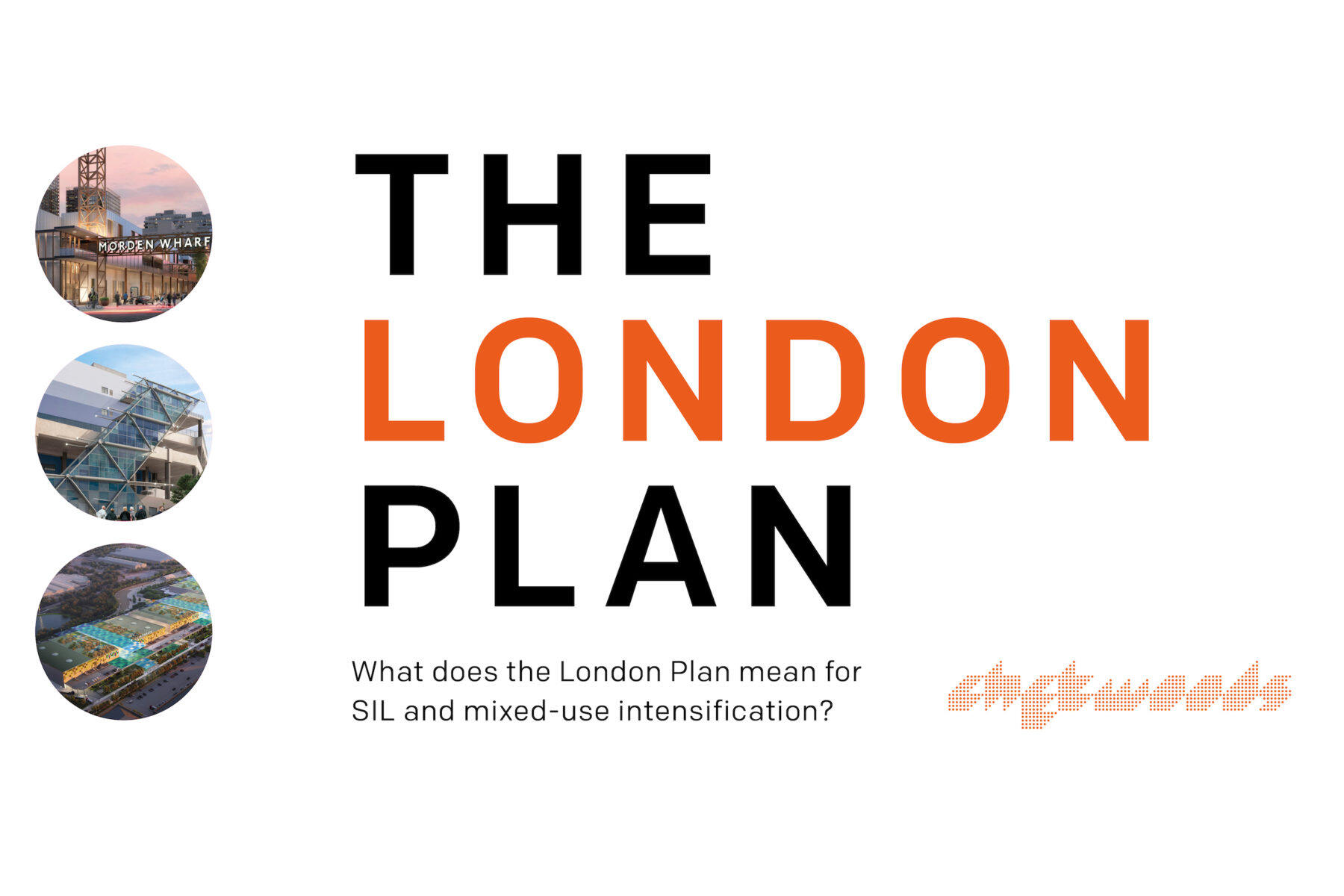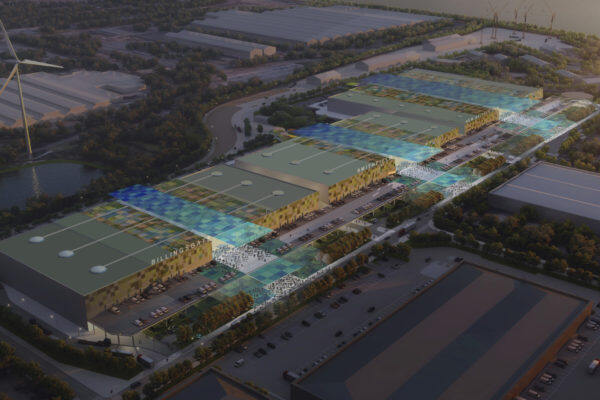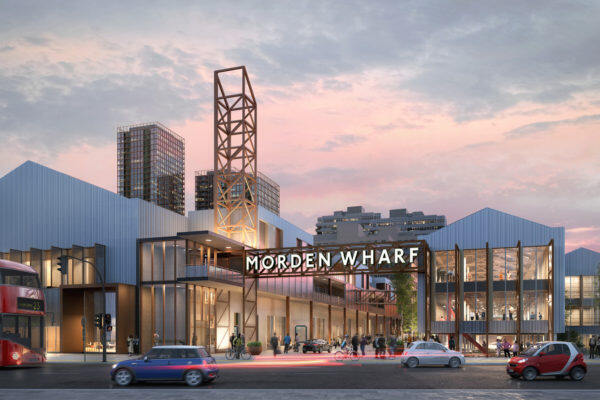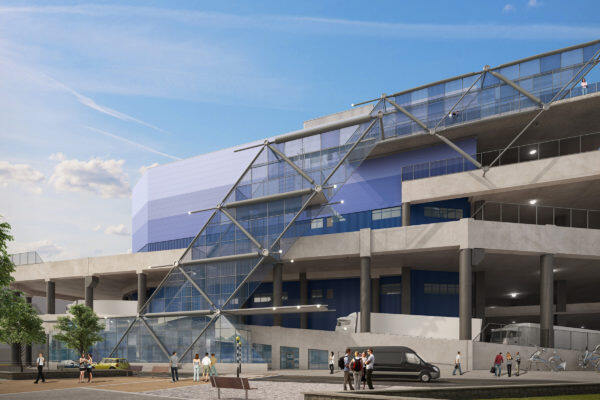Following the publication of the Mayor of London Sadiq Kahn’s New London Plan, and our own recent focus article on Industrial Intensification, our Research Team have been studying the new plan in more detail in the context of what it means for SIL land and Industrial Intensification in London.
The now finalised London Plan 2021, published 2nd March this year, will guide London on how the city will develop and evolve until 2041. With the population of the city set to grow by at least 70,000 every year, the Plan first and foremost addresses housing, infrastructure and employment. The three main drivers for this Plan are: to promote economic development and wealth creation in Greater London, to promote social development in Greater London and to promote the improvement of the environment in Greater London.
Though the Plan is set to be in use until 2041, it is worth noting that housing targets are only set until 2029, under the guidance of the 2017 Strategic Housing Land Availability Assessment. This assessment decides “the capacity of land suitable for residential development and intensification” and so therefore a future assessment which reaches a different conclusion could have far-reaching consequences on the use of land.
Perhaps Sadiq Kahn’s greatest overall change to previous Mayor of London Boris Johnson’s London Plan, is the introduction of Good Growth. In his own words, it “underpins the whole of the London Plan and each policy. It is the way in which sustainable development in London is to be achieved”. The Mayor wants to plan for a ‘smarter’ city, one less dependent on cars and driven by mixed-use development, with some of the key objectives of this being to ‘make the best use of land’, ‘create a healthy city’ and ‘deliver the homes Londoners need’.
Kahn is quick to acknowledge that London’s rapidly growing population will create “competing pressures on the use of space”. He subsequently asserts that the best way to combat this is to create places of higher density in appropriate locations, encourage a mix of land uses and co-locate different uses to provide communities with a wider range of services and amenities. He concludes that “all options for using the city’s land more effectively will need to be explored as London’s growth continues, including the redevelopment of brownfield sites and the intensification of existing places”.
Hot on the heels of Good Growth comes Spatial Development Patterns, a chapter in which strategic framework is provided for the parts of London which will see significant development over the lifetime of the Plan. The areas which will see most change are identified as Opportunity Areas, many of which are already seeing significant development. In this chapter, directives are given to boroughs and developers, with clear instructions to “support and sustain Strategic Industrial Locations (SIL) and other industrial capacity by considering opportunities to intensify and make more efficient use of land in SIL”.
This is of prime importance to Opportunity Areas such as the Old Kent Road and Royal Docks, which both contain swathes of industrial land. In terms of planning, the Plan asserts that Opportunity Areas actually form larger Growth Corridors and so Opportunity Areas should not be planned in isolation, rather as part of a larger whole. The Mayor has subsequently committed to developing effective cross-boundary working arrangements in order to unlock the full potential of the growth corridors within London.
Kahn’s opening policy for Land for Industry, Logistics and Services to Support London’s Economic Function reads as follows; “A sufficient supply of land and premises in different parts of London to meet current and future demands for industrial and related functions should be provided and maintained, taking into account strategic and local employment land reviews, industrial land audits and the potential for intensification, colocation and substitution”.
Alhough in his opening point intensification is acknowledged, he points out later in the chapter that under previous Mayoralties the release of SIL for non-industrial uses was far above the monitoring benchmarks set. In light of this, and with GLA research indicating that there will be a positive net-land demand for industrial land in the coming years, the amount of SIL to be released before 2041 has been limited to 233 hectares. This commitment to curb the release of industrial land is reiterated later on, “the retention, enhancement and provision of additional industrial capacity across the three categories of industrial land should be planned, monitored and managed”.
In terms of Policy directly addressing intensification, Policy E7 Industrial Intensification, Co- Location and Substitution states that “development proposals should be proactive and encourage the intensification of business uses in Use Classes B1c, B2 and B8”. The ways in which it can do this can be via a process of introducing small units, developing multi-story schemes, adding basements and general using land more efficiently through higher plot ratios. This is embellished upon later in the chapter, where it is stated that “all boroughs are encouraged to explore the potential to intensify industrial activities on industrial land to deliver additional capacity and to consider whether some types of industrial activities (particularly light industrial) could be co-located or mixed with residential and other uses”.
Other relevant policies to note within the Plan include new developments being required to deliver full fibre-optic connectivity, a continued push to use SIL as the primary choice for waste management facilities and the provision of hydrogen refuelling stations and rapid electric vehicle charging points at logistics and industrial locations.
In addition to this, it is prudent to take notice of the Agent of Change policy outlined in Chapter 3, where the principle “places the responsibility for mitigating impacts from existing noise and other nuisance-generating activities or uses on the proposed new noise-sensitive development”. This is particularly important for development proposed for co-location with industrial uses and the intensification of industrial estates.
Finally, Policy H4, Delivering Affordable Housing is worth drawing attention to. It states that although “most industrial land fulfils a vital role in supporting London’s economy… it is occasionally deemed appropriate for residential uses”. Where this is the case, the Mayor expects residential proposals on industrial land should deliver “at least 50 per cent affordable housing where the scheme would result in a net loss of industrial capacity”.
One of the major differences between Kahn and Johnson’s London Plan is the emphasis on intensification. The new London Plan acknowledges the increased impetus placed on industrial land and the role which it will play in the coming years. The focus on green, sustainable growth and the utilisation of Opportunity Areas may provide London with the solution it needs to maintain its place as a leading world city. Whilst rapid population increase and need for employment are creating a twin demand for the scarce industrial land left, intensification appears to be the bastion of progress and future direction.
At Chetwoods we are already working on a range of projects that explore the huge opportunities for intensification and co-location on strategic industrial land (SIL) and brownfield with ‘no net loss’ of industrial use. These projects are demonstrating how 40%-45% industrial density can be maintained, while using the remaining land for other uses, including residential.
(Image: london.gov.uk)




